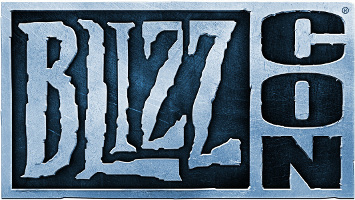These are a collection of questions we've been asked in the past about cosplay construction or etiquette, but if you have a question you don't see answered here, please shoot us an email!
Q: At conventions, I'm always afraid to ask cosplayers for pictures. Do you guys prefer it when people ask?
A: We love having our pictures taken (especially if you're a photography enthusiast and/or a professional)! You shouldn't be afraid to ask for photos - most cosplayers are very friendly (and have worked really hard on their costumes so appreciate being appreciated) and will be flattered that you want their picture. The other issue (for us anyway) is that although we're totally happy to have our picture taken, we do sometimes want to see the convention. Our rule is usually that if you ask to take our picture, we'll hold still for you as long as you need, but if you're one of those stealth photographers who doesn't ask, we probably will start moving again after some time. We try to be accomodating for everyone, but we are also at the Con to enjoy it for other aspects. So yes, we love having our pictures taken, but just remember that we're people too - we need to eat, get to panels and use the restroom. We also love having our picture taken with small children and dogs :)
Q: I'm never sure whether to refer to cosplayers as your character's name - what do you guys prefer?
A: For us - go ahead and call us by our characters' names! It's the easiest way to get our attention with all those people. We've actually only ever met one cosplayer that didn't want to be called by his character's name, but it seems super confusing.
Q: What do you guys make your costumes out of? How long does it take/how much does it cost?
A: It definitely depends on the costume - the costume tends to dictate what materials we use. We use a lot of different materials; so much that we've decided to list out our common materials and where we source them from!
- Thermoplastics
- Wonderflex - Low temperature thermoplastic with embedded fibers to increase strength. Has a slightly bumpy texture. Made in New Hampshire.
- Worbla - Kind of like Wonderflex without the embedded fibers. This means it's not as strong, BUT it can be molded into any shape without having to make sure the "good side" of the material is out. A bit of a grainy texture.
- Worbla TranspArt - This is a clear thermoplastic with a shiny, smooth texture. It doesn't shape as well as the bumpier stuff, but if you're just doing some simple curves then the improved texture can save a lot of work later. We used this for Ghost Rider's flames.
- We haven't actually used Worbla Black yet, but it's basically like the TranspArt but without the transparent part.
- Leather - Using actual leather in your costume can quickly make things more expensive, but it also can look phenomenal. Leather can also be wet formed into some great shapes (see the Gaslight Hawks, or the hats made for Arcane Zatanna, High Seas Hawkgirl, Hancock, or Witch Mercy). The actual piece will determine the weight and type of leather, but we almost always go with a vegetable tanned leather from Tandy Leather.
- Plastics
- PVC - Using PVC, either pipes or sheets, is a great way to have a solid structure in a large prop while still being lightweight and con-friendly. PVC pipe can be carved and painted to look like wood grain (which we used for the Atomic Hawks, High Seas Hawks, Witch Mercy's broom, Solas' staff, and others). It's cheap, it's strong, and it comes in a ton of different sizes. PVC can also be heat formed, but its working temperature is significantly higher than that of a standard thermoplastic, and the working time is significantly shorter. Be sure to wear leather gloves when heat forming PVC. Most hardware stores carry PVC pipes (we go to Home Depot), and for PVC sheeting we've ordered from Tap Plastics in the past.
- Acrylic Sheeting - When you need something transparent, colorful, and sturdy then acrylic sheeting is probably your best bet. We've used acrylic sheeting for the lenses in various masks (Ghost Rider, Nightmare Superman, Gaslight Catwoman) as well as for props (Atomic Green Lantern's construct hand, Cyberpunk Hawk wings, Witch Mercy's wings). The sheeting can be engraved (like Cyberpunk Hawkman's wings) or sanded to diffuse the light passing through. We get our acrylic sheeting from Tap Plastics.
- PETG - When you need a thinner plastic that can be vacuum formed, then PETG is your friend. It can be ordered from Amazon. It only comes in clear, but it can be hand-dyed with RIT dye if necessary (we used this process for the helmets on the Cyberpunk Hawks as well as the eye lenses for the Catwoman of Shanghai).
- Foam
- XPS, Extruded Polystyrene (AKA insulation foam) - When you need a rigid, closed-cell foam that is absurdly lightweight and easy to tool, then this is the go-to. Note that this foam is NOT useful for small or fiddly parts because it snaps VERY easily. Also keep it AWAY from heat (as in, don't try to heat form your thermoplastic directly on the foam)! It will totally melt. But if you need to fill a large area it's great. A combo we frequently use is to build a prop out of this and then cover it in Wonderflex to protect the foam and make it significantly more durable (see Arcane Green Lantern's mace, standard, and pauldrons). This also lets you spray paint it without fear of the foam getting eaten. We have plenty of props that are 100% XPS, however; we just have to be slightly more careful when handling them (Zer0's Maliwan sniper rifle, the Orphan Maker, our first Infinity Pistol), and you need to seal the foam before painting. You can find this stuff at just about any hardware store, we go to Home Depot. I recommend getting both the 2" and the 1" thickness. Note that the 2" only comes in giant, 8' tall sheets which will last you a very long time. I always have to snap it in half at the store to fit it in my car.
- EVA (AKA those jigsaw puzzle floormats) - This is a closed-cell, non-rigid, heat-formable foam. It's important to note up front that not all EVA foam is created equal. The floormats are cheap and easy to find (again, Home Depot almost always carries them). However they are textured on one side (which means smoothing or hiding that side of the foam) and they occasionally have some air bubbles. You can also get foam from places like TNT Cosplay Supply that will be smooth on both sides, come in a variety of thicknesses, and likely have fewer (if any) air bubbles. The fact that EVA is non-rigid allows you to build armor that will actually move a little when you move - note, however, that this is a double-edged sword. If you aren't being careful you can bend a piece of foam armor and wreck your paint job. EVA will heat form, though it's not like thermoplastic. You likely want to form it a bit more extreme than it actually needs to be, because it will try to return to a rest position. EVA is great for building armor or helmets, or props that need to be lightweight and take a beating. We've used it for Cyberpunk Hawkman's helmet, a large portion of Daredevil: 76's pulse rifle, a lot of Witch Mercy's wings, and some parts of the Jennifer Hale mash-up.
- L200 - This foam is VERY similar to EVA foam. It's basically the same stuff you can get in the packets of craft foam at Michaels. You can get it in a variety of thicknesses; in the past we've ordered from Foam Mart.
- High Density Open Cell Foam (AKA Mattress Foam) - This stuff is very special-case. If you need to fill a big space with something extremely light that can survive being squished, then this is what you want. Note that you WILL need to cover it in something, whether that's closed-cell foam or fabric, because the open-cell nature of this foam will not take paint. Also, I recommend getting an electric carving knife for cutting it. We used this foam for the broom end of Witch Mercy's staff as well as the tail for Squirrel Guy. You'll want some spray-adhesive to attach pieces of the foam together or attaching anything else to it. We've purchased this from both Foam Mart and Joanns in the past - Joanns with some coupons can get you some good prices.
- Super Sculpey - This is a clay-like substance that you can shape for as long as you want. Once it's ready you pop it in the oven to bake it. This hardens it, at which point you can either paint it or cast it for reproductions. The downside is that it needs to be baked and you have to rest it flat to work it. The Witcher medallion that Geralt wore was made of Super Sculpey. It can be purchased at most craft stores, such as Michaels.
- Apoxie Sculpt - Similar in purpose to Super Sculpey, this is a two-part compound. You mix the two parts equally and then you have a couple hours of working time. After 8 or so hours it will have hardened. The hardened Apoxie Sculpt can be sanded and polished, and Apoxie Sculpt also acts as a bit of an adhesive. I use it for detail work and gap fill. It has become one of my go-to materials because of how versatile it is. The only major downside is having to wait for it to cure. We've been using Apoxie Sculpt as the main base material we then cast for repeated detail work, such as the buckles and buttons on Witch Mercy, or many of the stars on Daredevil: 76. We hav ealso used it directly, such as the mace-pommel of High Seas Hawkgirl's sword, Shade's cigarette rocket, parts of Scarlett's hook, or any number of other small details. You can buy it on Amazon.
- Wood - While we do occasionally make things out of wood, many conventions are banning props made of actual wood. Iorveth's bow was made out of wood that was carved, sanded, and stained. The Silver Shroud's submachine gun was almost 100% wood as well. Wood is hard to screw up, unlike foam, because if your hand slips you make a minor gouge at worst. The flip side of this is that it takes a long time to carve and sand the wood down. Whenever I need wood I typically swing by Home Depot. First I check their cast-off pile (sometimes there's a piece of scrap in the pile that really nice and really cheap) and if that's no good then I pick up a board of whatever I need.
- Fosshape - This is a heat-formable fabric. It does experience some shrinkage when being heated, but it can be sewn to other fabric. It's also lightweight and holds its shape extremely well. We haven't used it much, but we did make High Seas Hawkman's mask out of it.
- Fabric - This is a bit of a catch-all. Obviously most of our costumes are made from fabrics. They can be spandex-like, stretch fabrics (the Yaya Han fabrics from Joanns are actually phenomenal, they're just REALLY expensive - don't buy them unless you have some killer coupons!). They can be faux-furs (don't be cheap when it comes to faux-fur or else you will have a mess on your hands. Check Etsy for some really unique stuff). They can be garment leather (Tandy has some nice stuff). They can be any number of other things, too - silk, twill, faux leather, etc. Our general go-tos are Joanns for the more common items, Mood for the harder-to-find stuff, and Etsy for the down-right eclectic.
- Casting Supplies
- Ultracal 30 - This can be used for both making a master mold OR as the base material in body casting. We've used it for both - a master mold when making Hancock's prosthetic, as well as for the head-casts we made years ago that we've used for a variety of costumes. It is available from The Engineer Guy, and locally we go to Armadillo Clay.
- Clay - We typically sculpt things out of chavant NSP clay. It's non-hardening for an unlimited work time, and a bit on the softer side. We recommend heating it up to work with; an old crock-pot is perfect for this. You can find this in a variety of places, such as The Engineer Guy.
- Silicone - The type of silicone you want to use depends on what you're trying to do. Making a box mold? You're going to want to make sure it's something that will release bubbles. Brushing the silicone on for use with a later mother mold? We've used Rebound 25 for that. Apply a few layers of that, and add some thickener to the last layer. Works great. You can get it from Smooth-On.
- Plasti-Paste II - While you don't have to use Plasti-Paste for your mother mold it works pretty well. You can brush it on and it hardens quickly. Maybe too quickly? The work time is really short, so mix it in small batches. It is also VERY sticky, so be sure to release everything that isn't silicone, and WEAR GLOVES.
- Resin - The type of resin you want to use vary much depends on what you're trying to do. Casting a gem? Try a clear resing with some tint in it. Roto-casting a helmet (like we did for Arcane Green Lantern and Ghost Rider)? Then you might want to try Smooth-Cast 65D. We've only ever used materials from Smooth-On.
As far as how long it takes - most of our costumes take at least a month to make from start to finish, usually a bit more. As far as cost - quite a bit! Just take a look at our collapsible wing tutorial to see how expensive the brass wings for the Gaslight Hawks were (and that's not including the leatherwork).
Q: I've always wanted to get into Cosplay, but I'm a little intimidated to start. What should I do?
A: Go for it! It doesn't matter if your first cosplay isn't your best, the fun is doing it (and making the costumes). Choose something relatively familiar that plays to your starting strengths (are you good at sewing? sculpting? mechanical things?) and go from there. We recommend staying away from difficult fabrics (like spandex or pvc) to start with, just because they can be really frustrating. The internet is chock full of fabulous tutorials and forums ready to help you (check out cosplay.com first!) If you're still concerned, we do offer consulting services to get you started on your own project or custom costume & props.




